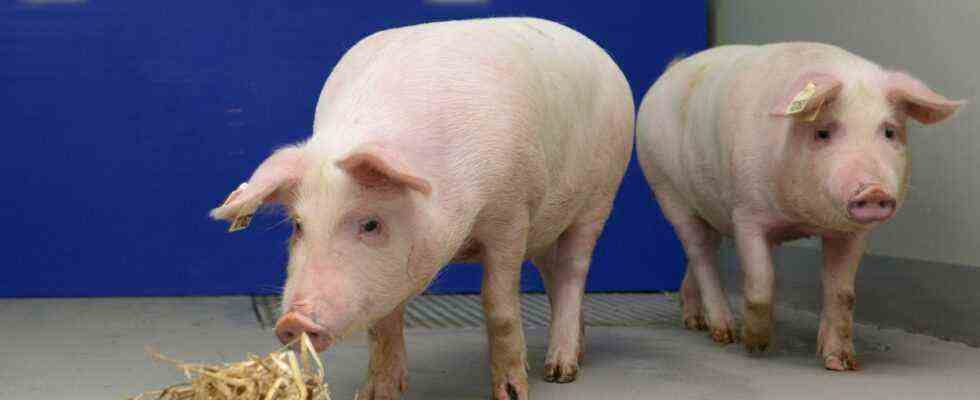Almost two weeks ago, for the first time in the world, a human being received a pig heart as a replacement for his own critically ill organ – a milestone in the field of organ transplantation. The operation in Baltimore is the result of research that has been carried out at the Ludwig Maximilian University (LMU), among others, for many years. A team led by Professors Eckhard Wolf from the Veterinary Faculty and Bruno Reichart from the Medical Faculty, who performed the first heart transplant in Germany in 1981, has been researching the genetic requirements for these highly complex operations for more than 25 years. A not inconsiderable part of this work takes place in Oberschleißheim, where everything that has to do with the pigs involved in the process happens in a branch of the LMU, as Eckhard Wolf explains: Here the genetic material of the animals is processed, here the even-toed ungulates are kept and observed to later prepare her for a transplant.
If you want to visit the stables and laboratories in Oberschleißheim, you first have to be decontaminated, take off your own clothes and, after a long shower, put on sterile work clothes. “We have to make sure that no pathogens get into our premises,” explains Wolf. Pigs from outside would not be allowed in. The facility was originally colonized via embryo transfers into particularly clean animals from the island of Fehmarn. Their cycles were synchronized in such a way that they matched the stage of development of the genetically modified embryos used.
Professor Eckhard Wolf from the Faculty of Veterinary Medicine at the LMU Munich and his colleagues have done crucial research work that made the first transplant of a pig heart possible.
(Photo: private)
It is the genetic modifications that make transplantation possible in the first place. You have to switch off certain functions and information, so to speak, in order to prevent a body from immediately recognizing and rejecting an organ from a different species as foreign. In Oberschleißheim, the scientists stored cell cultures in liquid nitrogen, in which the genetic modifications are made, in order to then clone the cells to produce the corresponding pigs and thus the basis for xenotransplantations – the technical term for the transfer of functional cells or whole cells Organs between different species – to create.
First pig organs were used in baboons
The transplantation in the USA would hardly have been possible without the research successes of the LMU scientists. For example, without the growth-inhibiting processing of the cells they developed: A pig’s heart would increase in size and weight after transplantation, for example into the body of a baboon, to such an extent that several vital functions of the primates, which weigh around 20 kilograms, would no longer be guaranteed. “A pig grows quickly, gaining weight from one to a hundred kilos within six months of being born,” says Wolf. He succeeded in changing the genetic material in such a way that this growth is throttled.
Transplantations of genetically modified pig hearts into baboon bodies do not take place in Oberschleißheim, but in the Walter Brendel Institute in the vicinity of the Großhadern Clinic. “There we have stables and housing options for baboons, it’s a kind of mini-clinic,” says Wolf. One of the monkeys operated on there lived for 195 days with a pig’s heart, and another experiment in the USA, in which a heart was connected to the abdominal artery of a baboon, went as far as 945 days without any major complications.
A transplant team in the USA claims to have connected a genetically modified pig heart to a human patient for the first time.
(Photo: Tom Jemski/dpa)
And so Eckard Wolf hopes that the 57-year-old patient in the USA will survive with the pig’s heart for as long as possible: “So far he’s fine, as far as we know. And the operation was almost two weeks ago.” This nourishes the hope that things could possibly go well for several months, according to the scientist. In Germany, too, such interventions are to be expected in the next few years. “The clinical trial in the USA will certainly have a positive effect on the entire field and will also accelerate development here,” says Wolf, who does not rule out transplantation of other animal organs such as kidneys in the future. “But this is not yet the subject of our specific research.”

